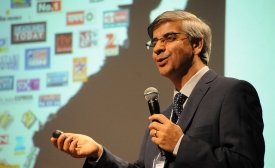South Asia


Global communications scholar Daya Kishan Thussu, whose most recent work is Communicating India’s Soft Power: Buddha to Bollywood, spoke at CPD as part of the Conversations in Public Diplomacy series. Thussu’s book considers India’s global cultural influence, within the context of India’s unique history.
Blogs are gradually emerging as mainstream media in India. I previously mentioned in my own blog that the presence of a free press and recent proliferation of media outlets in India has relegated bloggers to the background, unlike in societies where there are limits to freedom of expression. This is true especially in the space of ‘issues’ where the ability of bloggers to influence public discourse in India seems to be limited by being ‘somewhat unnecessary’.
If we do not highlight it often enough, cultural diplomacy promotes the creation of transnational social spaces of engagement and interaction. And, even as they are often identified with particular cultures or countries, cultural diplomatic interventions are also unavoidably cosmopolitan in nature, insofar as they move between, confront, and conjoin multiple social worlds. In this way and even when carried away by the worst excesses of national chauvinisms, cultural diplomacy is inherently a transnationalist project of sorts.
Two decades of economic liberalization ushered in significant changes to India’s business landscape. One important change has been the development of competitive capabilities of Indian companies and the increase in business, professional, and personal exchanges with global businesses, workforces, and ideas. This development has significant implications on India’s soft power projection.
APDS Blogger: Anna Dawson
APDS Blogger: Hend Alhinnawi
APDS Blogger: Jerry Edling







